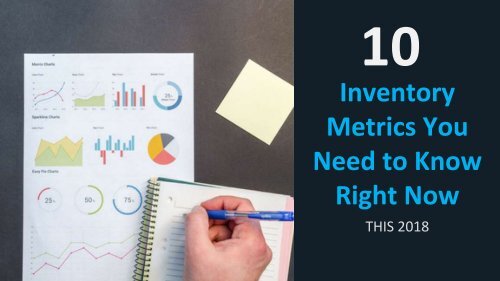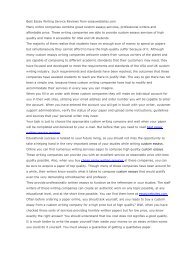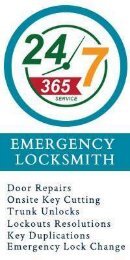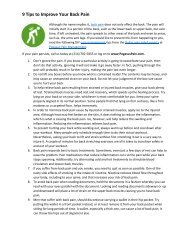Inventory management software for small businesses
https://emergeapp.net/features/inventory-management-software/ If you're not tracking your inventory numbers, you're losing money. Here are the top inventory metrics wholesalers should know.
https://emergeapp.net/features/inventory-management-software/
If you're not tracking your inventory numbers, you're losing money. Here are the top inventory metrics wholesalers should know.
Create successful ePaper yourself
Turn your PDF publications into a flip-book with our unique Google optimized e-Paper software.
10<br />
<strong>Inventory</strong><br />
Metrics You<br />
Need to Know<br />
Right Now<br />
THIS 2018
HOW’S YOUR<br />
BUSINESS DOING?
As a busy wholesaler and distributor, in<br />
between receiving purchases and fulfilling<br />
orders, I’m sure you must wonder how<br />
you’re business is doing
TOP TEN INVENTORY METRICS<br />
Let’s start with the most critical one that<br />
everyone talks about first when this<br />
topic comes up
1<br />
<strong>Inventory</strong> Turnover
<strong>Inventory</strong> turnover is the number of times inventory<br />
is sold within a period of time, typically a year
Ideally, you want to increase your inventory<br />
turnover and reduce your holding of<br />
inventory <strong>for</strong> a couple of reasons<br />
Firstly, increasing your<br />
turnover means<br />
reducing your holding<br />
cost<br />
Secondly, reducing your<br />
holding cost means<br />
increasing net income<br />
and profitability<br />
Finally, stocking items<br />
that turnover quickly<br />
means being responsive<br />
to the market and<br />
customer demand
2<br />
Gross Margin<br />
Percent
Gross Margin Percent = (Sales – The Cost of Sales) / Sales<br />
Gross margin percent works hand in hand with<br />
inventory turnover. If you have weak gross<br />
margins, you might want to focus on increasing<br />
your inventory turnover
3<br />
Customer Order Fill<br />
Rate
Customer Order Fill Rate = Orders that are Shipped in Full /<br />
Total Number of Orders<br />
The customer order fill rate shows how you are<br />
servicing your customers. It shows what orders<br />
your customers are getting on time
HOW CAN YOU IMPROVE THE<br />
CUSTOMER EXPERIENCE?<br />
Invest in a <strong>software</strong> solution that shows<br />
you real-time inventory levels
4<br />
Cost Of Carrying
Cost of Carrying = Carrying Costs / Overall Cost<br />
The cost of carrying is the percentage that<br />
represents the cents per dollar that is spent on<br />
inventory overhead per year
5<br />
Average Days To Sell<br />
<strong>Inventory</strong>
Average Days To Sell <strong>Inventory</strong> = (Your Average<br />
<strong>Inventory</strong>/The Cost of Goods Sold) x 365<br />
The average days to sell inventory is how long<br />
it takes a company to turn its inventory into<br />
sales, that is, the average length of time that<br />
your cash is tied up in inventory
6<br />
Return On<br />
Investment
Return On Investment = (Sales / Average Cost of<br />
<strong>Inventory</strong>) x Gross Margin<br />
This is also known as Gross Margin Return on<br />
Investment (GMROI). It shows how much you are<br />
earning <strong>for</strong> every dollar invested in your inventory
7<br />
Item Fill Rate
Item Fill Rate = Received Quantity / Ordered Quantity<br />
The item fill rate can be used to measure the order<br />
fulfillment per<strong>for</strong>mance of a single delivery or <strong>for</strong> all<br />
deliveries during a time period
8<br />
Cycle Time
Cycle Time = Actual Ship Date – Customer Order Date<br />
The item fill rate can be used to measure the order<br />
fulfillment per<strong>for</strong>mance of a single delivery or <strong>for</strong> all<br />
deliveries during a time period
9<br />
Average <strong>Inventory</strong><br />
Level
Average <strong>Inventory</strong> Level = (Current <strong>Inventory</strong> + Previous<br />
<strong>Inventory</strong>) / 2<br />
The average inventory level is the mean value of<br />
inventory throughout a certain time period
10<br />
<strong>Inventory</strong> Accuracy
<strong>Inventory</strong> Accuracy = Regular Stock Takes<br />
<strong>Inventory</strong> accuracy refers to how closely your<br />
inventory records match your physical inventory
Most importantly, sophisticated inventory<br />
<strong>management</strong> systems require high accuracies<br />
of at least 95% to function well and generate<br />
the ROI on your <strong>software</strong> investment
START BENCHMARKING<br />
YOUR BUSINESS NOW<br />
EmergeApp.net/<strong>Inventory</strong>-Reports/10-<strong>Inventory</strong>-<br />
Metrics-For-SMBs/
Now it’s your turn to apply<br />
them to your business<br />
operations and gauge your<br />
per<strong>for</strong>mance and<br />
efficiency with stock<br />
control
















